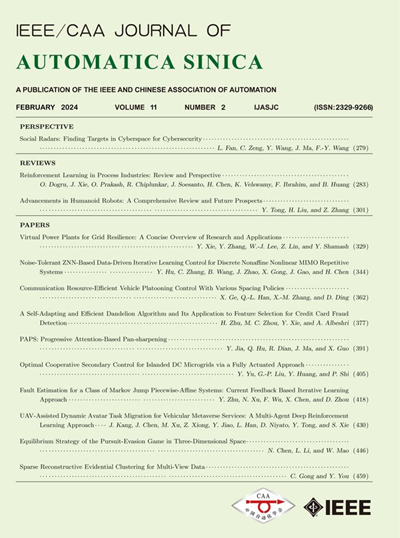Data-Driven Two-Stage Robust Optimization Allocation and Loading for Salt Lake Chemical Enterprise Products Under Demand Uncertainty
IF 19.2
1区 计算机科学
Q1 AUTOMATION & CONTROL SYSTEMS
引用次数: 0
Abstract
Most enterprises rely on railway transportation to deliver their products to customers, particularly in the salt lake chemical industry. Notably, allocating products to freight spaces and their assembly on transport vehicles are critical pre-transportation processes. However, due to demand fluctuations from changing product orders and unforeseen railway scheduling delays, manually adjusted allocation and loading may lead to excessive loading and unloading distances and times, ultimately increasing transportation costs for enterprises. To address these issues, this paper proposes a data-driven two-stage robust optimization (TSRO) framework embedding with the gated stacked temporal autoencoder clustering based on the attention mechanism (GSTAC-AM), which aims to overcome demand uncertainty and enhance the efficiency of freight allocation and loading. Specifically, GSTAC-AM is developed to help predict the deviation level of demand uncertainty and mitigate the impact of potential outliers. Then, a robust counterpart model is formulated to ensure computational tractability. In addition, a multi-stage hybrid heuristic algorithm is designed to handle the large scale and complexity inherent in the freight space allocation and loading processes. Finally, the effectiveness and applicability of the proposed framework are validated through a real case study conducted in a large salt lake chemical enterprise.需求不确定性下盐湖化工企业产品数据驱动的两阶段鲁棒优化配置与装载
大多数企业依靠铁路运输将产品交付给客户,特别是在盐湖化工行业。值得注意的是,将产品分配到货运空间并在运输车辆上组装是关键的运输前过程。然而,由于产品订单变化带来的需求波动和铁路调度的意外延误,人工调整配货和装货可能会导致装卸距离和次数过大,最终增加企业的运输成本。针对这些问题,本文提出了一种嵌入基于注意机制的门控叠时自编码器聚类(GSTAC-AM)的数据驱动两阶段鲁棒优化(TSRO)框架,旨在克服需求不确定性,提高货物分配和装载效率。具体来说,GSTAC-AM的开发是为了帮助预测需求不确定性的偏差水平,减轻潜在异常值的影响。然后,建立了一个鲁棒的对应模型,以保证计算的可追溯性。此外,设计了一种多阶段混合启发式算法来处理货物空间分配和装载过程中所固有的大规模和复杂性。最后,通过对某大型盐湖化工企业的实际案例研究,验证了所提框架的有效性和适用性。
本文章由计算机程序翻译,如有差异,请以英文原文为准。
求助全文
约1分钟内获得全文
求助全文
来源期刊

Ieee-Caa Journal of Automatica Sinica
Engineering-Control and Systems Engineering
CiteScore
23.50
自引率
11.00%
发文量
880
期刊介绍:
The IEEE/CAA Journal of Automatica Sinica is a reputable journal that publishes high-quality papers in English on original theoretical/experimental research and development in the field of automation. The journal covers a wide range of topics including automatic control, artificial intelligence and intelligent control, systems theory and engineering, pattern recognition and intelligent systems, automation engineering and applications, information processing and information systems, network-based automation, robotics, sensing and measurement, and navigation, guidance, and control.
Additionally, the journal is abstracted/indexed in several prominent databases including SCIE (Science Citation Index Expanded), EI (Engineering Index), Inspec, Scopus, SCImago, DBLP, CNKI (China National Knowledge Infrastructure), CSCD (Chinese Science Citation Database), and IEEE Xplore.
 求助内容:
求助内容: 应助结果提醒方式:
应助结果提醒方式:


